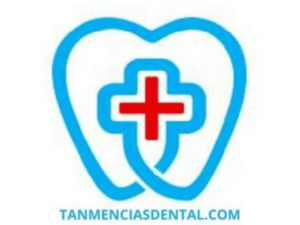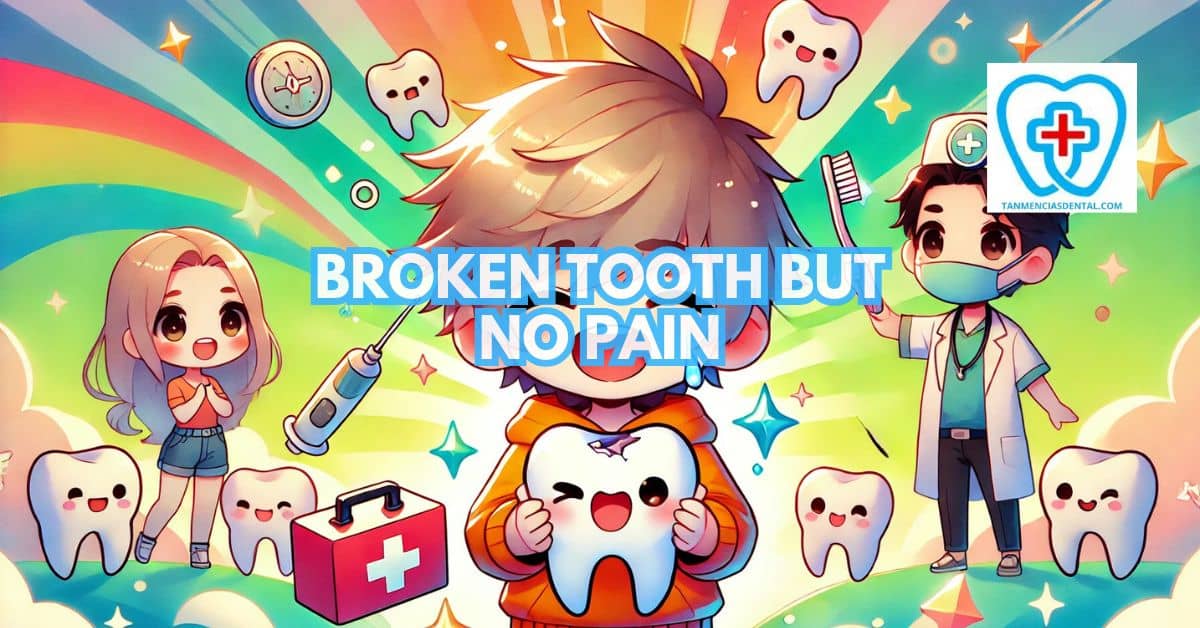Breaking a tooth can be unsettling, but if you’re not feeling any pain, it might be hard to know what to do next.
While it may not feel urgent, a broken tooth still needs care to prevent future problems.
Leaving it untreated could cause serious issues later, even if it seems fine now.
You might think it’s okay to ignore a broken tooth, but there are important steps to take to keep it from getting worse.
We’ll provide clear and straightforward actions for managing a broken tooth when there’s no pain.
1. Stay Calm and Assess the Extent of the Damage
The first thing to do is to stay calm.
It can be surprising to discover a broken tooth, but panicking won’t help.
Take a moment to carefully check the broken tooth by looking in a mirror.
See if you can determine if it’s just a small chip or if a larger piece has broken off.
Understanding the size and shape of the break will help you decide the next steps to take.
🦷 What Does Brushing Your Teeth With Salt Do?
2. Look for Other Symptoms Like Swelling or Bleeding
Even if there isn’t any pain, it’s important to check for other symptoms.
Look at the area around the broken tooth for swelling or redness.
Bleeding could mean there is damage to the gums or deeper tissue.
If you notice any of these signs, it could mean that more care is needed.
Noticing these symptoms early can help prevent an infection from developing later on.
🦷 Are Dental Hygienist Doctors? The Difference Between Dental Hygienists and Dentists Explained
3. Clean the Area with Warm Salt Water
Rinse your mouth gently with warm salt water to clean the broken area.
Salt water is effective for reducing bacteria and helps keep the area around the tooth clean.
This will help to prevent any infections from starting while you wait to see a dentist.
Mix a half teaspoon of salt into a cup of warm water and swish it gently for about 30 seconds.
Repeat this a few times a day until you can get professional help.
🦷 How to Get Rid of Bad Breath Even After Brushing Teeth
4. Protect the Broken Tooth from Further Damage
Try to protect the broken tooth to keep it from getting worse.
Avoid touching the broken area with your fingers or tongue since this can lead to irritation or cause the break to spread.
If possible, cover the sharp edges with dental wax or sugar-free gum to prevent cuts to your cheek or tongue.
Keeping the area safe from more damage will make any future treatment easier.
A little caution now can go a long way in preventing additional harm.
🦷 Can a Broken Tooth X-Ray Reveal More Than Just the Obvious Damage?
5. Avoid Certain Foods That Could Worsen the Break
Be cautious about what you eat to avoid making the break worse.
Hard foods like nuts, popcorn, or candy can put extra pressure on the tooth and cause more damage.
Sticky foods like caramel or chewing gum can also get stuck and pull at the broken part of the tooth.
Cold or hot foods may not be painful now, but they could irritate the exposed area and lead to discomfort.
Stick to soft foods like yogurt, soup, or mashed potatoes until you can see a dentist.
🦷 How Do Dentists Determine if Braces Are Necessary for a Patient?
6. Monitor for Changes in Tooth Sensitivity
Pay attention to any changes in how the broken tooth feels.
Sometimes a tooth that isn’t painful right away can become sensitive to temperature or pressure.
If you start feeling any twinges of pain when eating or drinking, this could mean that the inner part of the tooth is becoming exposed.
Write down when and what kind of sensitivity you feel so that you can inform your dentist.
These changes could help them determine the best treatment plan.
🦷 Are Dentists Open on Weekends? How Weekend Hours Benefit Patients with Busy Lives
7. Contact Your Dentist as Soon as Possible
Even if there is no pain, you should contact your dentist promptly.
A broken tooth may seem harmless now, but it can cause complications like infections or tooth decay if ignored.
Call your dentist’s office and explain what happened, describing the break and any other symptoms you notice.
They may be able to offer advice on how to care for the tooth until your appointment.
The sooner a dentist can examine the tooth, the better chance you have of preventing further problems.
🦷 What Diseases Can You Get From Not Brushing Your Teeth?
8. Use Temporary Dental Solutions if Necessary
If you cannot see a dentist immediately, consider using a temporary dental solution.
Many pharmacies offer over-the-counter temporary fillings or dental cement that can help protect the broken tooth.
These products are easy to apply and can shield the exposed area from further damage for a short time.
Keep in mind that these are not permanent solutions and should only be used until you can see a professional.
Using these products may help keep the tooth safe from bacteria and additional breakage.
🦷 How to Find an Affordable Oral Surgeon Without Compromising Quality Care
9. Understand the Long-Term Risks of a Broken Tooth
It is essential to understand the long-term risks of not treating a broken tooth.
Even without pain, the exposed area can lead to decay, as bacteria can enter the vulnerable parts of the tooth.
Over time, this can cause cavities or infections, which may spread to other teeth or even the jawbone.
A broken tooth can also weaken over time, making it more prone to complete fracture or loss.
Addressing the problem early can prevent more invasive treatments down the line, such as root canals or extractions.
🦷 What are the Essential Dental Tools for Cleaning Teeth?
10. Explore Treatment Options for Broken Teeth
When you visit your dentist, you will need to discuss the best treatment options for your broken tooth.
Depending on the severity of the break, they may suggest bonding, which involves applying a resin to repair the chipped area.
If the break is more severe, a crown might be needed to cover the entire tooth and provide protection.
In some cases, veneers could be an option for a visible front tooth.
Your dentist will assess the condition and help you understand which treatment will work best for restoring both function and appearance.
👨⚕️ Conclusion
Even without pain, a broken tooth needs attention and care to prevent complications.
Following these steps can help you protect the tooth until you are able to see a dentist.
Ignoring the problem could lead to infections, increased damage, or even loss of the tooth.
Taking care of it quickly will make a big difference in maintaining your dental health.
By acting promptly, you can prevent long-term issues and keep your smile healthy and strong.
😊 Self-Promotion
Looking for top-notch dental care in Parang, Marikina City?
Visit Tan-Mencias Dental Clinic for a friendly, comfortable, and professional experience!
Have questions or need to book an appointment?
Reach out to us anytime by calling 9171451074, messaging us on our Facebook page, or through our website’s contact form.
We’re here to help you achieve your best smile—contact us today!

